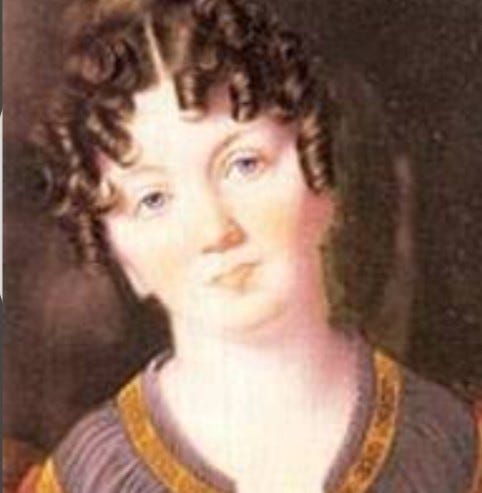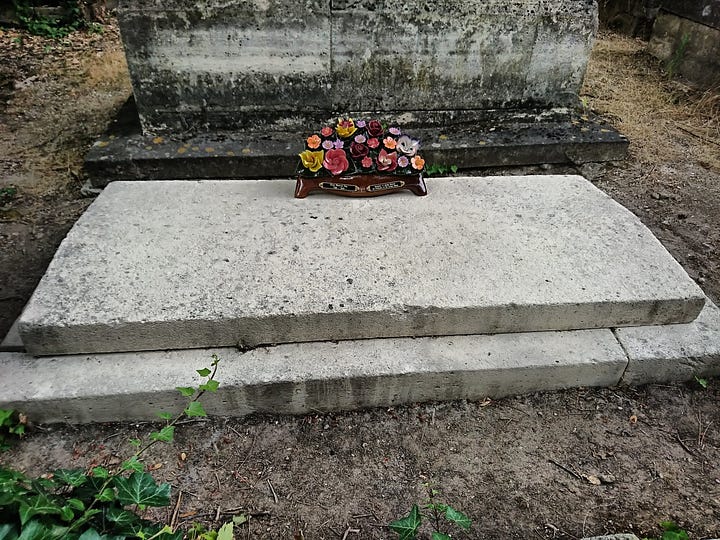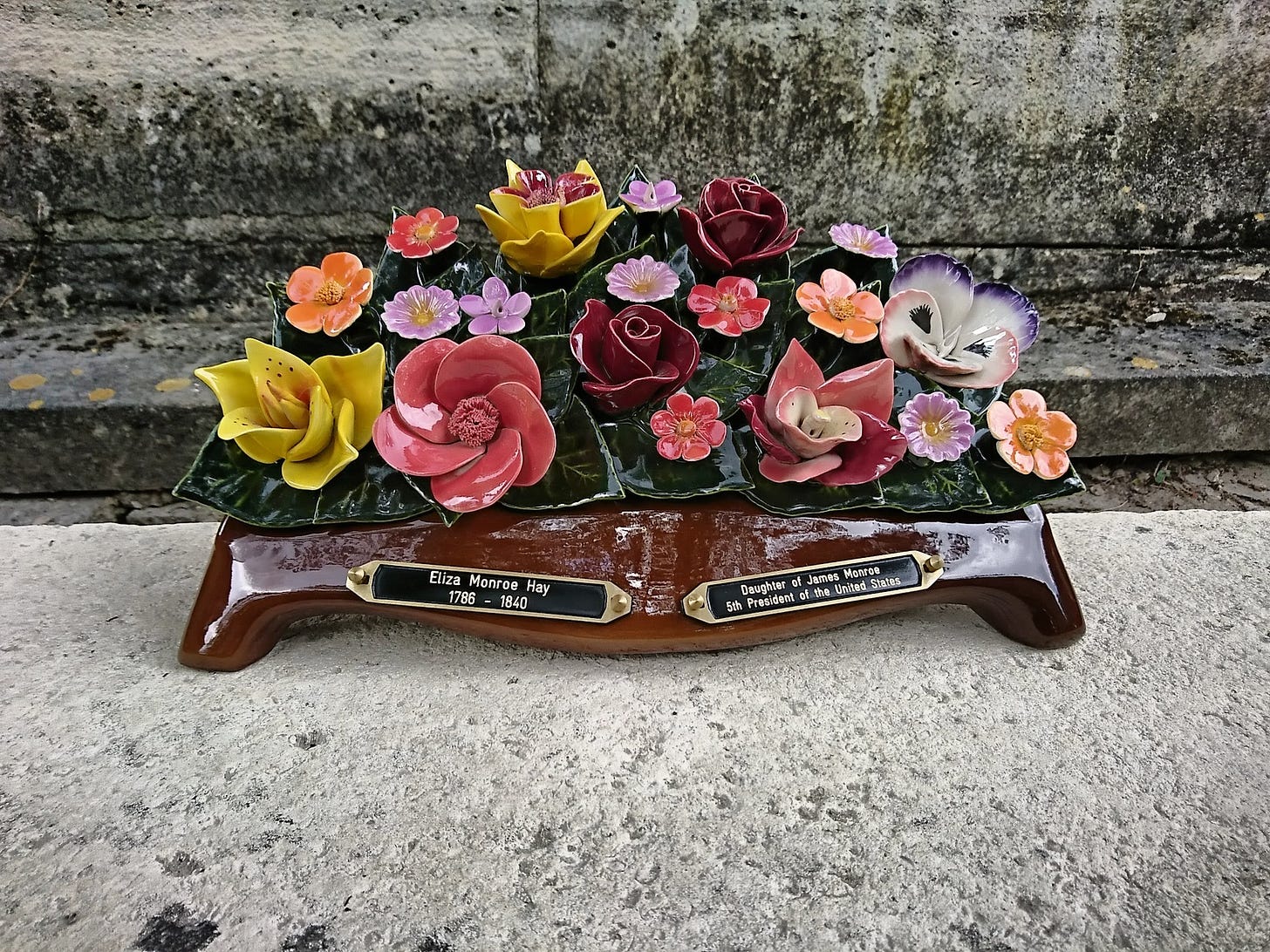Justice for a President's Daughter
New research into James Monroe's older daughter, Eliza, uncovers a different narrative than the one generally accepted, and leads to an effort to "Bring Eliza Home."
By Adele Uphaus
MANAGING EDITOR AND CORRESPONDENT
Email Adele


If you’ve learned anything at all about Eliza Monroe Hay, the older daughter of fifth U.S. president James Monroe, you probably learned that Washington society considered her to be a snob and that she was a Francophile who left her country to spend her last years in Paris.
But five years of research have led Barbara VornDick, who works as an interpreter at James Monroe’s Highland in Albemarle County, and arts and cultural advocate Kathryn Willis, of Fredericksburg, to a different conclusion.
“Eliza’s inheritance from her father was basically stolen from her and that’s how she died in tragic circumstances in poverty,” VornDick said.
To both VornDick and Willis, Eliza comes through as an intelligent and opinionated woman whose personality didn’t match what was expected of women at the time. Her story is an important part of women’s history, showing how precarious life was for 19th-century women, who couldn’t own property and “were at the mercy of men for their very prosperity,” VornDick said.
VornDick authored a book about what she discovered, Eliza’s True Story: The First Biography of President’s Monroe’s Eldest Daughter (published in July 2024, by Barnes and Noble Press), and will deliver a free lecture about her research on Tuesday, January 14, at 1 p.m., at the Fredericksburg branch of the Central Rappahannock Regional Library.
At Highland, VornDick said, interpreters are encouraged to conduct independent research into the Monroe family. She was always interested in the Monroe women—Monroe’s wife, Elizabeth Kortright Monroe, and his two daughters, Maria Hester Monroe Gouverneur and Eliza, who was 15 years older than her sister.
Eliza was born in Fredericksburg in 1786 and spent much of her childhood in France, where Monroe was stationed as the American minister. She was fluent in French when she returned to the U.S. in 1803 with her family. She married an attorney, George Hay, and had a daughter, Hortensia, as well as three granddaughters.
When Monroe was elected president in 1817, Eliza acted as First Lady, since her mother was ill.
Eliza’s husband and her mother died in 1830 and her father in 1831. She moved back to Paris in the late 1830s, died there in 1840, and is buried in Pere Lachaise Cemetery.
For VornDick, the accepted narrative that Eliza would abandon her family to live out her life and die in Europe just didn’t make sense and she was inspired to find out more.
“I’m a grandmother, and you couldn’t pay me enough to go away and leave my family, especially my grandchildren,” she said.
Because there is so little written about Eliza in any of the Monroe biographies, VornDick went to primary sources—letters, deeds, wills, ship manifests, court documents, probate proceedings, as well as census records and newspapers from the era.
“It turned into a detective story,” said VornDick, who is a retired educator and stressed that she is not a historian.
An archivist at the National Archives in Washington, D.C.— “who went the extra mile for me,” VornDick said—discovered a collection of documents from the American consulate in Paris from the year 1840, when Eliza died.
“They had been filed under the wrong century in the National Archives and hadn’t been seen for 200 years,” VornDick said.
Among the documents were papers of Daniel Brent, a Stafford-born man who was the American consul and who knew Eliza from having served in Monroe’s administration.
When he learned that she had died alone in Paris, he took care of her burial out of his own pocket, paying for a funeral mass and a grave in Pere Lachaise cemetery, VornDick said.
Brent’s papers also included an inventory of Eliza’s possessions at the time of her death, which amounted to two traveling trunks filled with clothing and papers.
“She did not own one household furnishing, not even a candle holder,” VornDick said. “She had been in Paris for a year and a half, and she had not set up a residence. To me, that says she would have come home, but she was deep in debt. Passage across the Atlantic was $100 in that day—today it would be $3,500.”
Monroe willed an inheritance to both his daughters, but Eliza never received her share, VornDick said, though she hired lawyers to help her.
VornDick also uncovered examples of Eliza’s kindness and sense of duty that did not mesh with her reputation for being bossy and aloof.
She took care of her mother, who VornDick said suffered from epilepsy, for 13 years, often at the same time as her husband, who was also ailing. She also nursed her father for 10 months before he died.
She nursed the sick in Washington, D.C. through two epidemics and took special care of the young child of John Calhoun, Monroe’s Secretary of War.
“The Calhouns told her not to because she (Eliza) was preparing for her sister’s wedding, but Eliza insisted and so did James Monroe,” VornDick said. “He told the Calhouns that Eliza was the best nurse for their child, and Eliza visited and sat up with the child four times.”
VornDick found more evidence of Eliza’s sense of duty in the fact that she ensured the fulfillment of one of her father’s dying wishes—the manumission of his enslaved manservant, Peter Marks.
“I have come to the conclusion that Eliza was an intelligent, caring woman, who had ideas and spoke them, and who rose to the occasion and got things done. Those are qualities we would admire in a woman today, but in the 1800s, when women were supposed to be demure, she was branded as obstinate,” VornDick said. “It was interesting that in my research, I found unflattering words used to describe her, but I did not find examples of actions to back up those words. I searched and searched. That is why I think it likely that her assertiveness and competence were interpreted during that era as behavior unbecoming for a woman.”
Willis became involved in Eliza’s story in 2018, when she was volunteering at the James Monroe Museum and helped Scott Harris, executive director of the University of Mary Washington Museums, translate a letter from Pere Lachaise.
“It said that if something wasn’t done to restore Eliza’s grave, her bones were going to be exhumed and put in an ossuary,” Willis said.
Willis happened to be traveling to Paris and volunteered to look into the situation. It turned out that the cemetery officials had mistaken the grave next to Eliza’s for hers. There was no headstone on Eliza’s grave, only a slab with no name or other marking, covered with ivy and moss.
“I spent week clearing it up, and had a marker created to put on her grave, which still is there,” Willis said.


Harris had introduced her to VornDick and she was familiar with what VornDick was learning through her research.
“I think for me, I was moved by the injustice and the fact that because [Eliza] was not a man, she had no voice,” Willis said. “That this could happen to a president’s daughter, who hired a lawyer and did everything she could, and she still was not able to get what she was owed, I think was because of society at the time.”
Along with rehabilitating Eliza’s name, Willis and VornDick are working to bring her home from France and reinter her in Richmond’s Hollywood Cemetery with her mother, father, and sister, as their research convinces them she would have wished.
VornDick contacted and obtained support for the effort from every one of Eliza’s living descendants, as well as from a descendant of Daniel Brent, the man who paid for her grave in Paris.
Willis and VornDick have a Paris funeral home ready to help them exhume the grave and Found and Sons Funeral Home of Fredericksburg and Culpeper has offered to assist with the repatriation stateside. With help from the American Embassy in Paris, they’ve filed all the necessary paperwork with Pere Lachaise cemetery and are waiting for the cemetery’s OK.
“We even have a priest ready” to officiate at a reinterment ceremony in Hollywood Cemetery, they said.
Willis said the duo hope their efforts will “bring awareness to a broader audience ab out who [Eliza] was.”
“This is her story, and it needs to be told,” she said.

Local Obituaries
To view local obituaries or to send a note to family and loved ones, please visit the link that follows.
Support Award-winning, Locally Focused Journalism
The FXBG Advance cuts through the talking points to deliver both incisive and informative news about the issues, people, and organizations that daily affect your life. And we do it in a multi-partisan format that has no equal in this region. Over the past year, our reporting was:
First to break the story of Stafford Board of Supervisors dismissing a citizen library board member for “misconduct,” without informing the citizen or explaining what the person allegedly did wrong.
First to explain falling water levels in the Rappahannock Canal.
First to detail controversial traffic numbers submitted by Stafford staff on the Buc-ee’s project
Our media group also offers the most-extensive election coverage in the region and regular columnists like:
And our newsroom is led by the most-experienced and most-awarded journalists in the region — Adele Uphaus (Managing Editor and multiple VPA award-winner) and Martin Davis (Editor-in-Chief, 2022 Opinion Writer of the Year in Virginia and more than 25 years reporting from around the country and the world).
For just $8 a month, you can help support top-flight journalism that puts people over policies.
Your contributions 100% support our journalists.
Help us as we continue to grow!













Wonderful story. Thanks
For a few days, things are progressing...